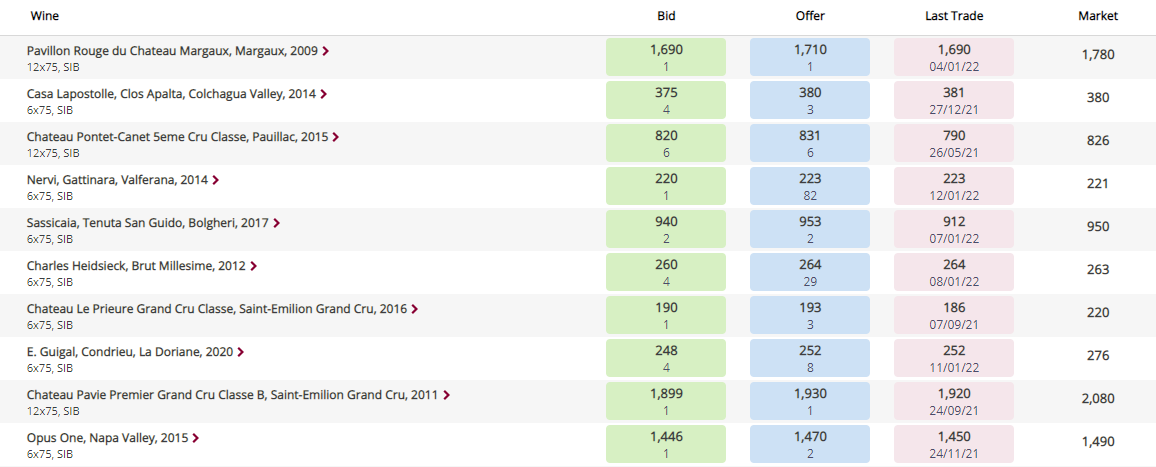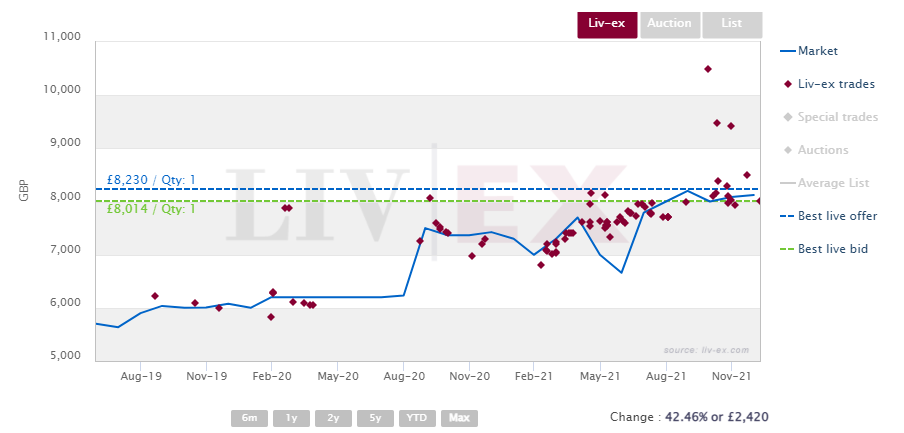- Market making is a trading strategy that provides liquidity to other traders by setting both bid and offer prices simultaneously, making a margin on the spread.
- The Liv-ex platform offers its members the infrastructure (data, trading and settlement) to make markets in a low cost, low risk environment.
- Liquid wines such as the First Growths, Super Tuscans and Champagne are a great place to start.
What is a market maker?
A market maker is a company or an individual that places both an offer to sell and a bid to buy on a tradeable asset, such as wine, and earns margin from the spread – the difference between the bid and the offer.
Market makers provide liquidity to the market by always being there to buy and sell.
How do market makers earn their margin?
Market makers decide on the spread they are happy to take by setting both a buy and sell price simultaneously. Typically, a market maker would set their spread around the Market Price, paying a little below market, selling a little above, but every market maker has their own strategy.
For example, the most traded wine by volume in the last year, Sassicaia 2018, has a current Market Price of £2,050 per 12×75. Let’s say that a trader who wants to make a market in Sassicaia 2018 decides on a 7% spread. They would constantly quote a bid price for the wine at £1,978 per 12×75, effectively buying 3.5% below market. Simultaneously, they would be offering the wine 3.5% above market, at £2,122 per 12×75. The difference between their buy and sell price of £144 would be the profit to the market maker.
The spread is the key factor. Knowing one’s total cost of transaction (net of commission and settlement fees) and day-to-day operating costs (office, IT, coffee etc…) allows market makers to set their minimum spread and thus operate profitably. Having a large pool of liquidity and minimal counterparty risk allows for tighter spreads.
Examples of the tightest spreads on Liv-ex

How does this apply to the fine wine market?
The first thing a market maker must do is study the market. The lowest risk is where the liquidity is the greatest. That is to say, wines in which there is ready demand.
There are over 16,000 different active markets on Liv-ex. The most actively traded wines, however, remain the First and Second Growths. There is also strong liquidity in the Super Tuscans and the major Champagne labels.
Château Lafite Rothschild, for instance, is the most traded wine brand on Liv-ex. Its 2018 vintage led trade by value in 2021.
Château Lafite Rothschild 2018 trades on Liv-ex

Having selected the wines, the market maker then decides on the bid and offer prices they intend to post, depending upon the liquidity on offer. Typically, the greater the liquidity, the tighter the spread and vice versa.
It is possible to automate trading with an algorithm. This will reduce the workload of the market maker allowing them to automatically adjust prices as the market moves and trades are executed.
A profitable market making strategy depends on two pillars – liquidity and minimal risk. Liv-ex provides both.
Liv-ex also minimises risk by acting as central counterparty to all transactions, ensuring all wines are delivered against the contract and all monies are paid against any sale. The market maker on Liv-ex does not need a logistics team, but instead operates off Liv-ex’s infrastructure and clear rules of engagement.
Liv-ex – a meeting place for wine businesses worldwide
Liv-ex, the global marketplace for the wine trade, has over 560 members across 43 countries. These include wine merchants, traders, auction houses and wine investment funds – businesses small and large.
Together they make up the largest trading community of wine professionals in the world whose combined activity offers the deepest pool of liquidity available – £100m and growing.
Liv-ex members can contact their account manager for more information on market making and how it might work for them.
Liv-ex analysis is drawn from the world’s most comprehensive database of fine wine prices. The data reflects the real time activity of Liv-ex’s 560+ merchant members from across the globe. Together they represent the largest pool of liquidity in the world – currently £100m of bids and offers across 16,000 wines. Independent data, direct from the market.
Not a member of Liv-ex? Request a demo to see the exchange and a member of our team will be in touch with you shortly.





